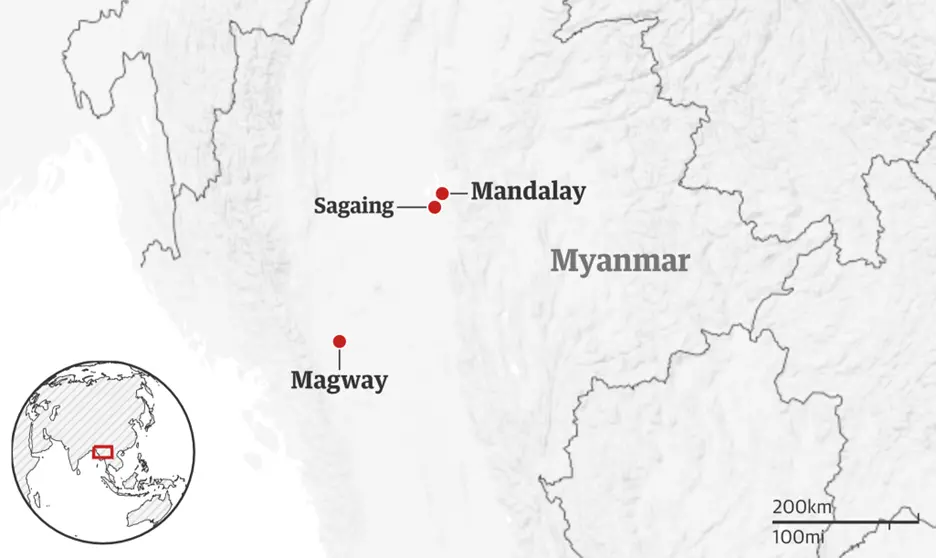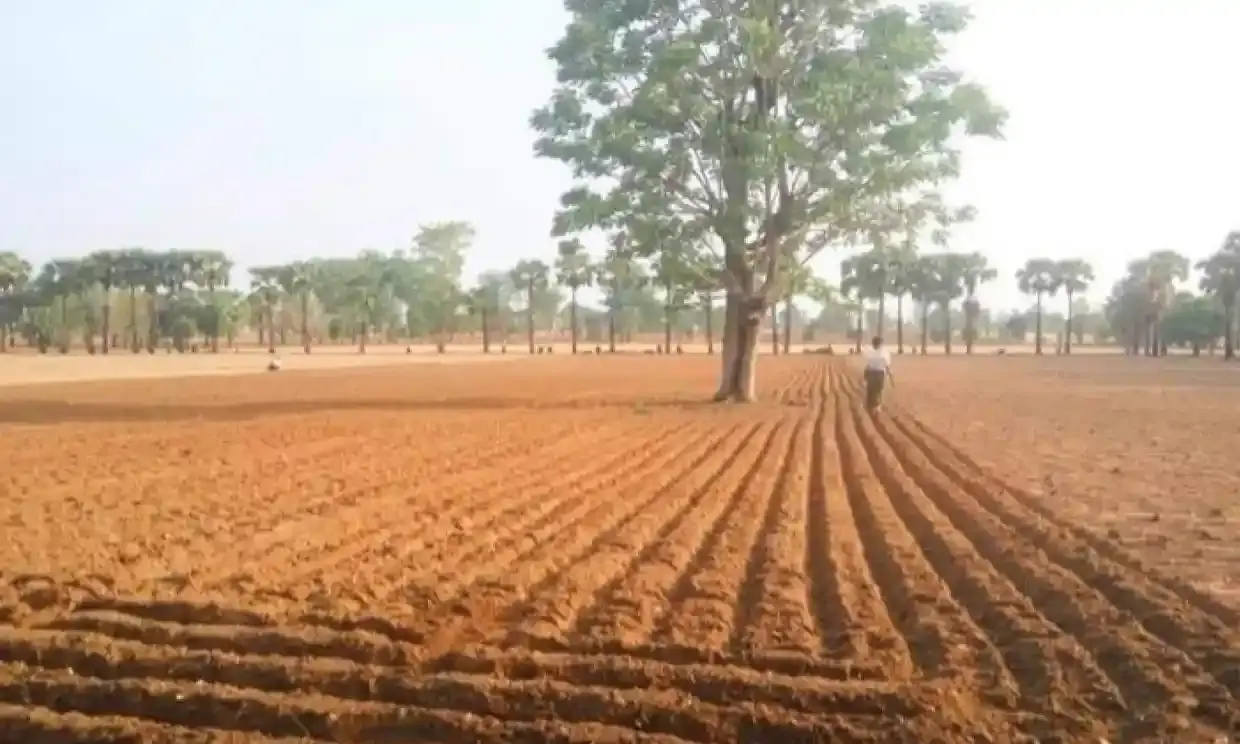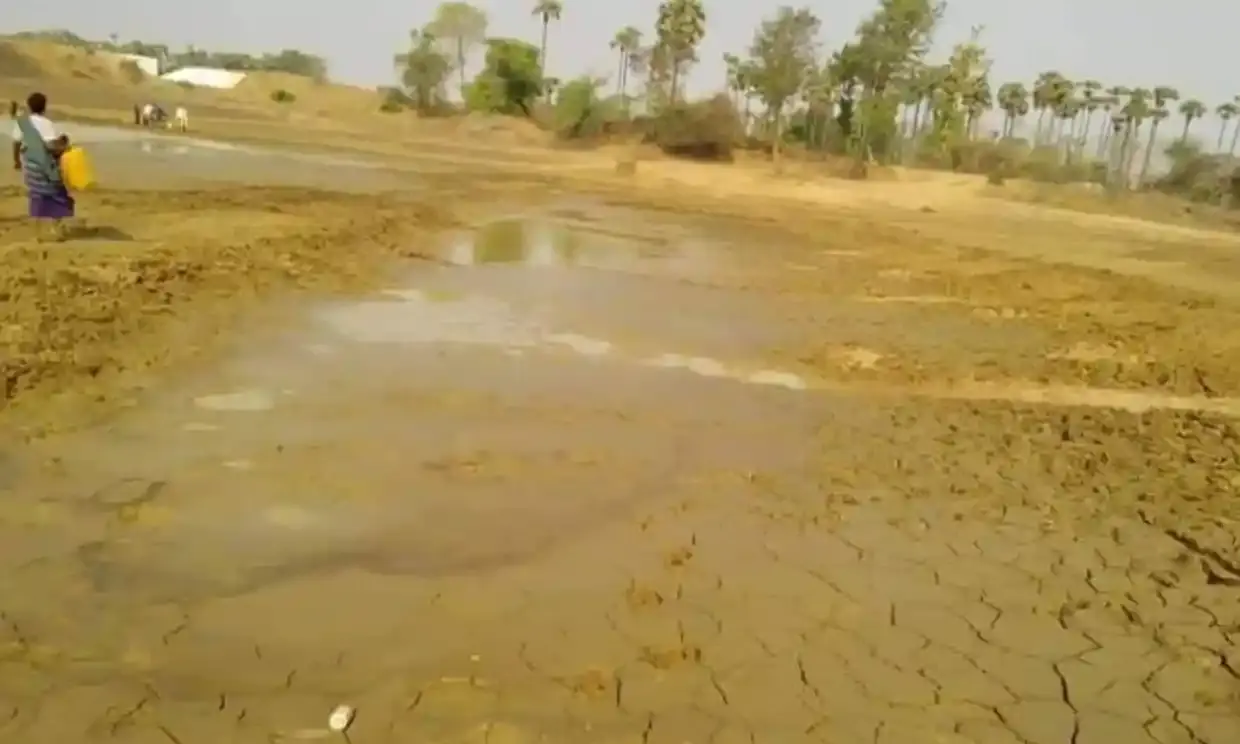To read this story in Burmese, click here.
Before the morning sun brings the oppressive heat of the day, village cars, once laden with the dry zone’s staple beans, sesame, and peanuts set off for the regional capital of Magway.
But today, when the trucks draw in, they are crammed with young men and women clutching bundles of paperwork. They are seeking to flee what once was Myanmar’s agricultural capital in response to a growing food, job, and security crisis.
Climate changes in the baking heartlands, COVID-19, and the military’s violent attacks on villages since its coup in 2021 have prompted an exodus of young people from the region.

As a nonprofit journalism organization, we depend on your support to fund more than 170 reporting projects every year on critical global and local issues. Donate any amount today to become a Pulitzer Center Champion and receive exclusive benefits!
Nay Moe Swe Kyaw, who runs a free meal program for residents of Magway, says since the Omicron variant hit the region six months ago, around 100 people queue outside the town’s passport office each day. While some in the trucks are destined to Japan or Singapore to finish their education, China and Thailand are preferred by those seeking work.
“[The crowd] reminds me of how it used to be at the pagoda festival,” he recalls. “Magway’s passport office is packed with crowds every single day.”
‘Only elders remain’
Migration is nothing new for those who have grown up working Magway’s parched earth; ten years ago, 72% of those migrating from one community in the region cited environmental change as the driving factor.
Yet the region is only growing hotter. Record-breaking temperatures have afflicted Myanmar’s dry zone – which includes Magway, Mandalay and Sagaing – over the past two years. Twenty-two of its cities registered record highs in 2020, the riverine market town of Chauk in central Magway recorded a staggering 47.5 C (117.5 F).

A former resident of Magway’s Thit Gyi village, Zar Chi Lwin, says her family began to experience unprecedented crop failure in 2007 after shifts in climate made it impossible even to grow the sesame that the region is famed for.
“Our farmland, which was previously 100% productive, saw output levels drop to between 60 and 40% per acre,” she said.
Unable to finance their debt, in 2010 Zar Chi Lwin’s family sold their ancestral land for half of its former value and migrated to the commercial capital of Yangon. Her parents, she says, were reduced to tears by the move.
Ten years ago, only 6% of dry zone inhabitants surveyed said they planned on migrating overseas. Today, however, villagers report that a pressing need for incomes and escape routes is driving those of working age abroad at unprecedented rates. Crop failure — along with a post-coup collapse in trade and the plummeting value of Myanmar’s currency, the kyat — has prompted the exodus of a debt-laden workforce, which includes Zar Chi Lwin herself.

She says as much as 70% of her village has moved to Thailand since she left. Those who went were predominantly 20- to 35-year-olds hoping for better economic opportunities.
“Only elders remained in the village – nobody of working age – so production may have been reduced by a half. This caused huge inflation in the price of goods and, then, a military coup made it worse. I couldn’t even afford to buy cooking oil!” Zar Chi Lwin said.
Land razed
The people of Magway — which borders Rakhine state and Mandalay in Myanmar’s north-west — were among the first to mount a resistance to the military government. They have been specifically targeted by the military’s latest “land clearance” operations — scorched-earth campaigns that have so far entailed the wholesale arson of entire villages and the rape, murder, and arbitrary detention of thousands of civilians. Rights groups have documented tens of thousands of incidences of human rights abuses and war crimes committed by the military across Myanmar over the past 16 months.
In May, U.N. humanitarian agency OCHA estimated that almost 55,000 of the Magway’s near four million inhabitants have been forced from their homes and lands by the military since February 2021. In neighbouring Sagaing, that number is more than 336,000. In Magway and Sagaing — where citizens are almost entirely from Myanmar’s Bamar ethnic group — it is the first time in decades that such punishments have been meted by the country’s genocidal, and predominantly Bamar, military.
Naruemon Thabchumpon, professor of cross-border migration at Bangkok’s Chulalongkorn University, says that while further research is needed to assess the true number of dry zone natives now in Thailand, threats to the region including the climate change and conflict have been significant factors.
“The climate crisis affects the life of the people, and in the case of those from the dry zone this is pretty clear," she says.
“When we look at the intensifying conflict, the first region that started fighting against the military is the dry zone region of Sagaing. The conflict map bears this out: there is a clear relationship between climate crisis, economic concerns, and areas experiencing recent political instability.”
Uncertain future
Those left behind say they worry about what this exodus will mean for their families.
In the northern Magway city of Yenankyaung, Hnin Si Ni’s farmland had yielded the region’s famed soybean and sesame oil for generations. By 2005, increasing temperatures had brought new problems.
“My cousins’ families had to move to the city to find new jobs,” Hnin Si Ni explained, adding that crop yields at her own family’s farm had fallen by 30% since 2005 due to increasing temperatures bringing dry soil, unpredictable weather patterns, reduced crop output, and natural disasters.

“Some of them moved to Yangon, some to Myitkyina [capital of Myanmar’s Kachin State on the Myanmar-China border], while others moved to Thailand.”
While farmers have grown accustomed to working with cracked soils, Nay Moe Swe Kyaw says he now worries about what rising crop prices and empty villages will mean for the future of his community.
“With higher commodity and fuel prices, people and small businesses are facing many difficulties, losing their financial interests,” he said.
“If this situation continues, people will certainly face incredible hardships. I can’t bear to think about it. The longer the coup lasts, the graver the situation will be for all of us — that’s for sure.”
- View this story on Democratic Voice of Burma








